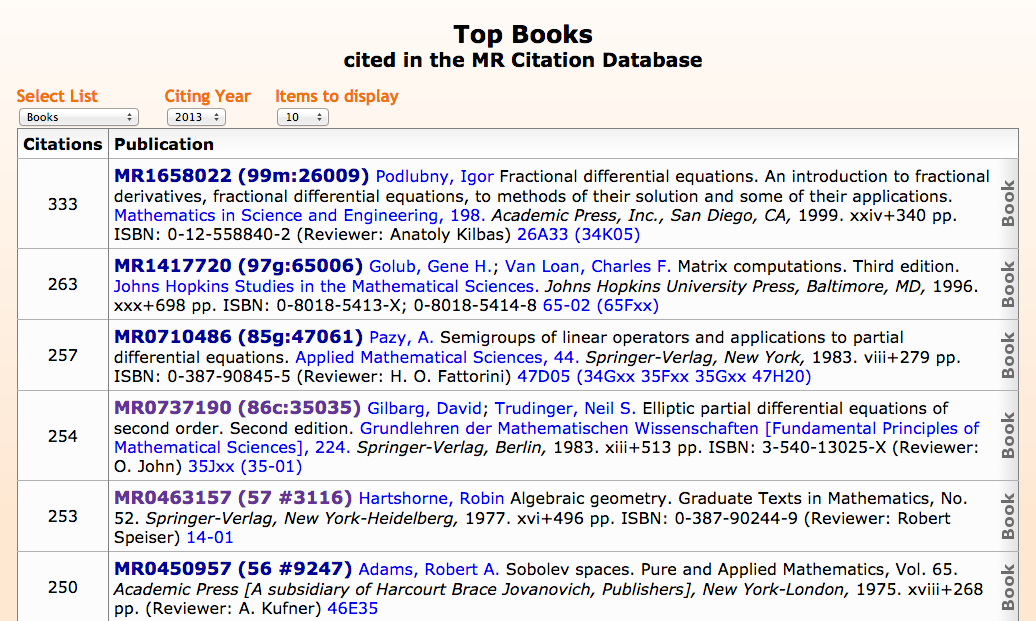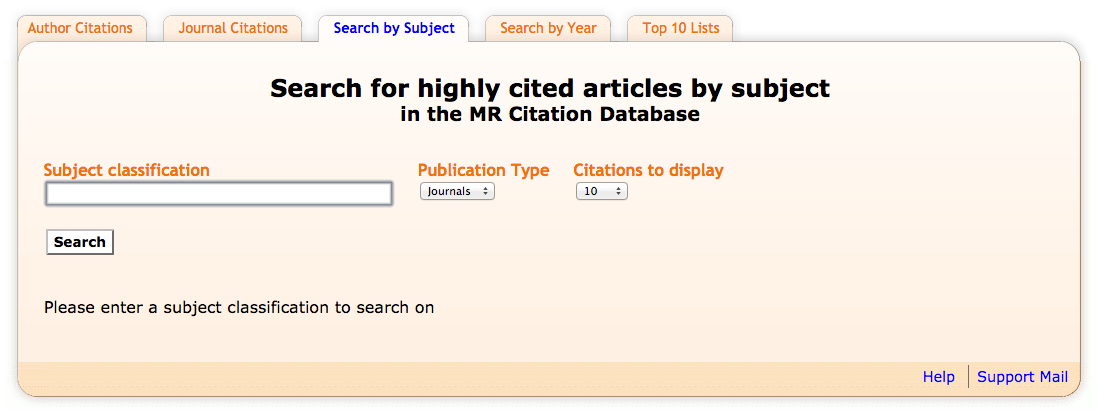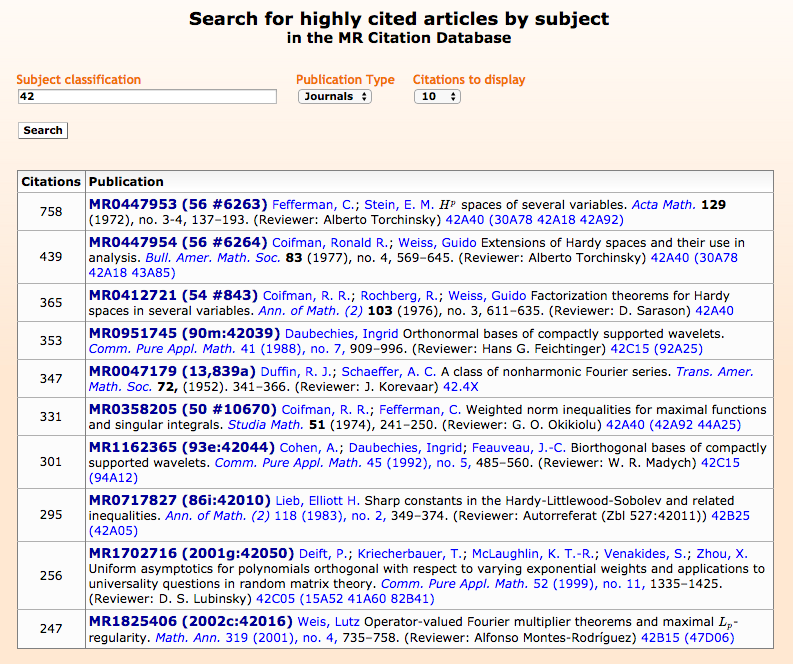As many in the United States know, David Letterman retired from his late-night television show recently. Among other things, he was known for his Top Ten Lists. Well, the mathematically inclined do not have to go without, as MathSciNet has Top Ten Lists! From the main MathSciNet page http://www.ams.org/mathscinet, click on the Citations tab. You now have five choices of types of searches ordered by citation, using the citation database built from our Reference List Journals.
Pre-packaged Top 10 Lists
The tab labelled “Top 10 Lists” will guide you through lists of the most highly cited books or journals by citation year. You can also see the journals with the highest “MCQ” by year. I will say more about the MCQ, or “Mathematical Citation Quotient”, in a future post. Note that the lists for Books and Journal Articles are just for citations from a single year. If you go to the MathSciNet listing for an item on a Top 10 List, you can see the total citations to that item in the box in the upper right-hand corner. For instance, if we look for the ten most highly cited books using 2013 as the citation year, we see the following (only the first six display on my screen):
If you think about it, there is no surprise that none of them is recent. Rather, they tend to be standard references in their fields. Remember that this list is just the number of citations to these books from articles published in 2013. If you want the total number, you should click through to the MathSciNet entry for any of the items. For instance, the second edition of Gilbarg and Trudinger’s book has a total of 4222 citations (as of May 30, 2015). There are another 1235 citations to the first edition.
Search by Subject
Now let’s use another tab to make our own Top 10 List. Clicking Search by Subject, brings you to:
The subject should be a two-digit MSC (Mathematics Subject Classification). Many people know the class for the areas in which they work. To find MSCs, you can either go to the MSC page available from the Free Tools for MathSciNet page or the AMS’s MSC page. Let’s try the Subject Classification “42 = Fourier Analysis”:
I’m not a specialist in this field, but I certainly recognize most of the authors here. Note that this list is ordered by total number of citations. By changing the number of citations to display, you can also make a top 20, top 50, or top 100 list.
Search by Year
Finally, let’s use the Search by Year tab. For a given year, this list should say something about important or influential results from that year. Picking the publication year to be 2010 and the type of publication to be a journal article, we obtain
The first article is the Part I of the paper that established a major part of Mori’s Minimal Model Program. Along the way, the authors also prove that the canonical ring is finitely generated, another major result.
Acknowledgment
I am happy to thank Steve Miller for making the connection from MathSciNet to David Letterman.





